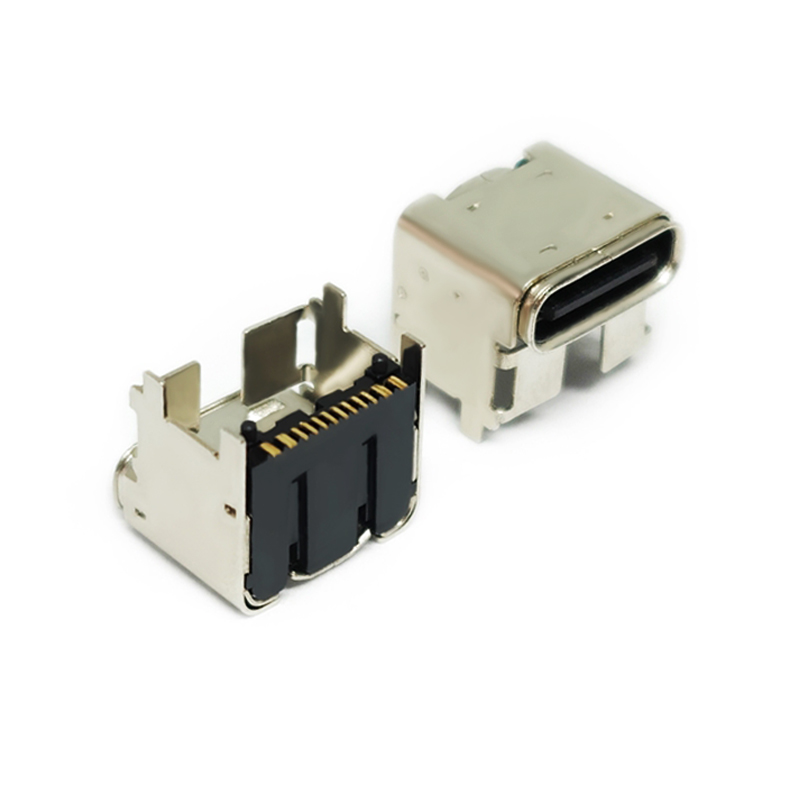1. Development Background: Solving Miniaturization Challenges
As consumer electronics and industrial devices trend toward slimmer profiles and higher integration, PCB component density has surged. Traditional Type-C receptacles face two critical limitations:
Space Constraints: In ultra-thin devices, standard-height connectors risk interference with batteries, cooling modules, or display flex cables.
Mechanical Stress: Repeated plugging/unplugging concentrates stress on solder joints, compromising long-term reliability.
To address these challenges, our R&D team developed the Raised-Height Type-C PCB Receptacle, leveraging vertical space optimization to redefine connector-PCB synergy.
2. Engineering Breakthroughs: How the Raised-Height Receptacle Works
Structural Innovation
Stepped housing design elevates connector height by 1.0-5.9mm , paired with L-shaped pins for robust PCB mounting.
Reinforced internal ribs ensure 10,000+ plugging cycles at elevated heights.
Signal Integrity Assurance
Optimized differential signal routing maintains compliance with USB 3.2 Gen2 (10Gbps) and higher protocols.
Integrated EMI shielding within the raised section minimizes electromagnetic interference.
Manufacturing Advancements
Precision-molded housings with unified metal contacts via proprietary tooling.
Laser welding technology enhances PCB attachment reliability.
3. Key Advantages: Why Choose Raised-Height Receptacles?
| Benefit | Technical Value |
|---|---|
| Space Efficiency | Clears components on PCB underside, ideal for ≤10mm-thick designs |
| Enhanced Durability | Reduces solder joint failure risk by 60% via stress distribution |
| IPX8 Readiness | Accommodates multi-layer seals for waterproofing solutions |
| SMT Compatibility | 99.3% assembly yield with optimized pick-and-place clearance |
4. Target Applications: Where Raised-Height Matters
Foldable Devices
Avoids hinge mechanisms in foldable phones/tablets.
Industrial Embedded Systems
Bridges over PCB-mounted heat sinks in compact control panels.
Ruggedized Equipment
Enables multi-stage sealing in IP-rated enclosures.
Ultrabooks & Mini PCs
Navigates around protruding chipset components in sub-10mm chassis.
5. Design Guidelines: When to Specify Raised-Height?
Prioritize this solution when:
PCB-to-enclosure gap <2.5mm
Backside BGA components exist near connector zone
Product must pass 1.2m drop tests
Industrial-grade longevity (>5 years) is required
As a USB-IF certified leader in Type-C connectivity, we empower next-gen devices from drone video systems to AR headsets with raised-height receptacles. Contact our engineering team for 3D models, compliance reports, or custom design support.
